American Weigh Scales GPR-20 Digital MilliGram Scale, 20 by 0.001g
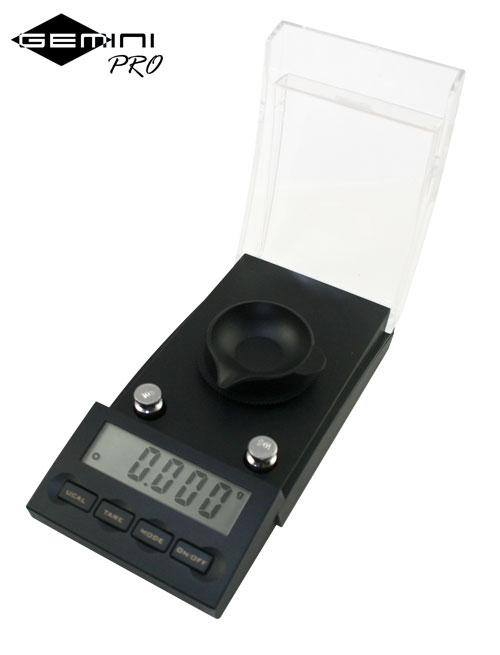
I came to be aware of American Weigh GPR-20 when reading Amazon reviews for My Weigh GemPro 250. A number
of people said that they switched to this scale after trying GemPro, so I figured, for
$57 at Amazon ,
why not try both?
,
why not try both?
The scale came nicely packaged in a leather folder.
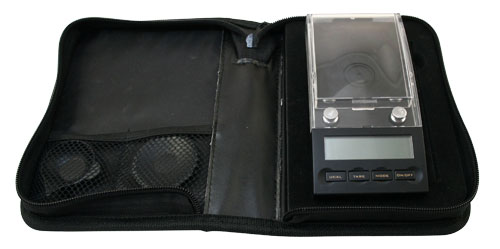
Inside the folder there was the scale, the pincers, two weighing pans, the manual, and two calibration weights, 10 grams each.
The scale has the range of 20 grams (300 grains), and the standard deviation of 3 milligrams, which means that its 99.8% confidence interval approximately
+/-10mg, or +/-0.15 grains. You can be certain that the true weigh is within this far from the reading.
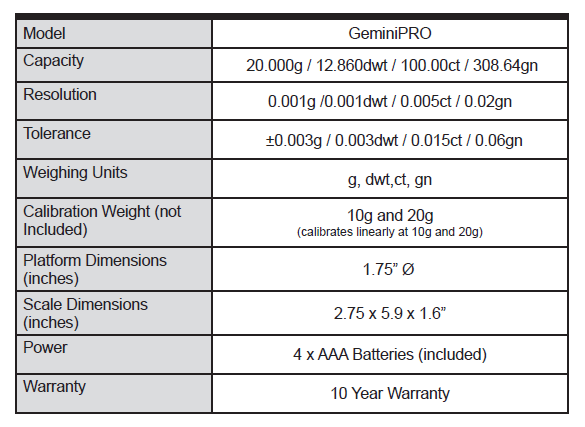
I started the experiment by calibrating the scale using the factory weights. The procedure involves two data points - 10 and 20 grams.
After doing so, I ran the scale through the ASTM Class 1 calibration set, and the results were approximately 2 milligram (0.03 gr)
below the nominal masses of the weights in the set, but they were generally within +/-1mg from this offset, which was a good sign.
After that, I repeated the calibration, but this time I used the weights from the calibration set, rather than the ones included with the scale. Afterwards,
these were the results.
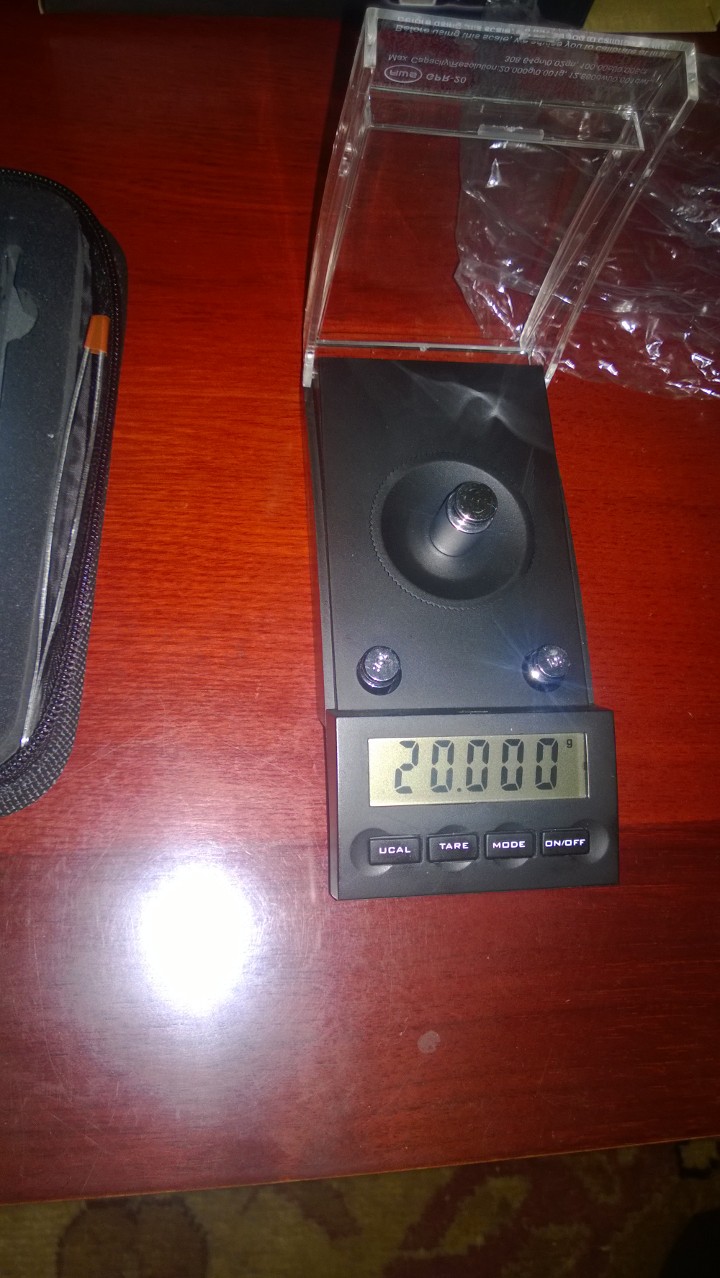
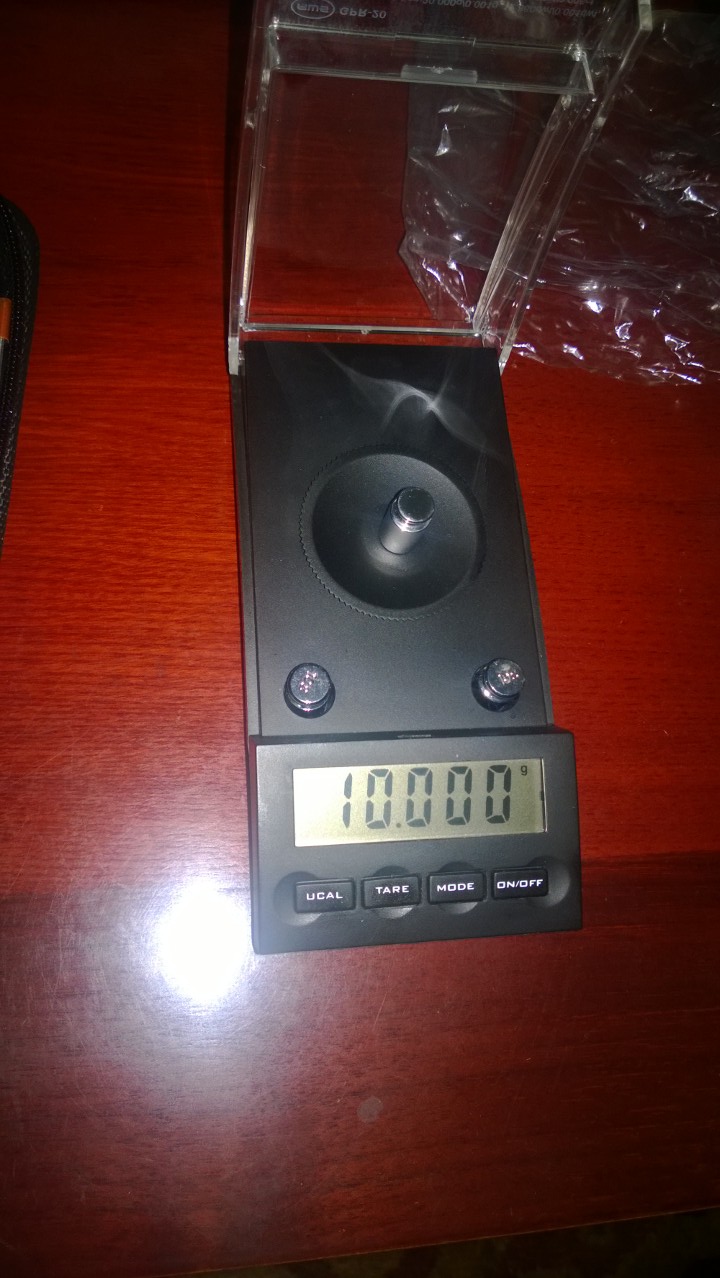
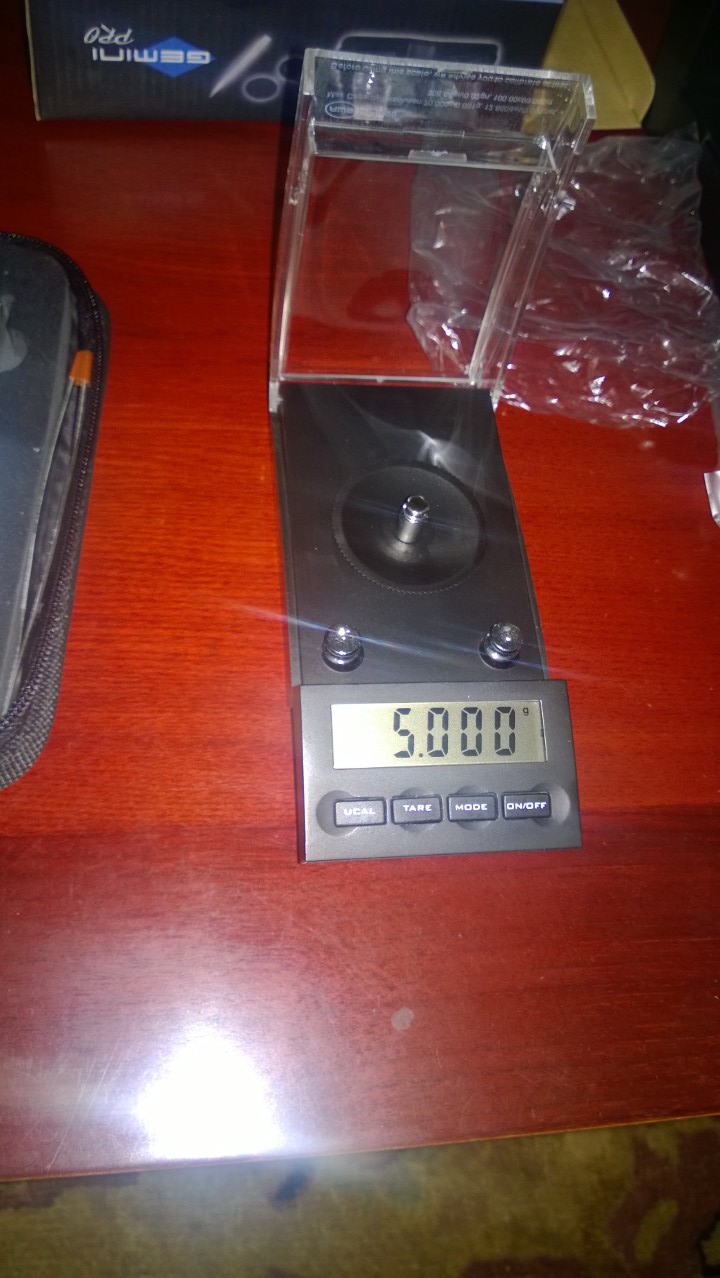
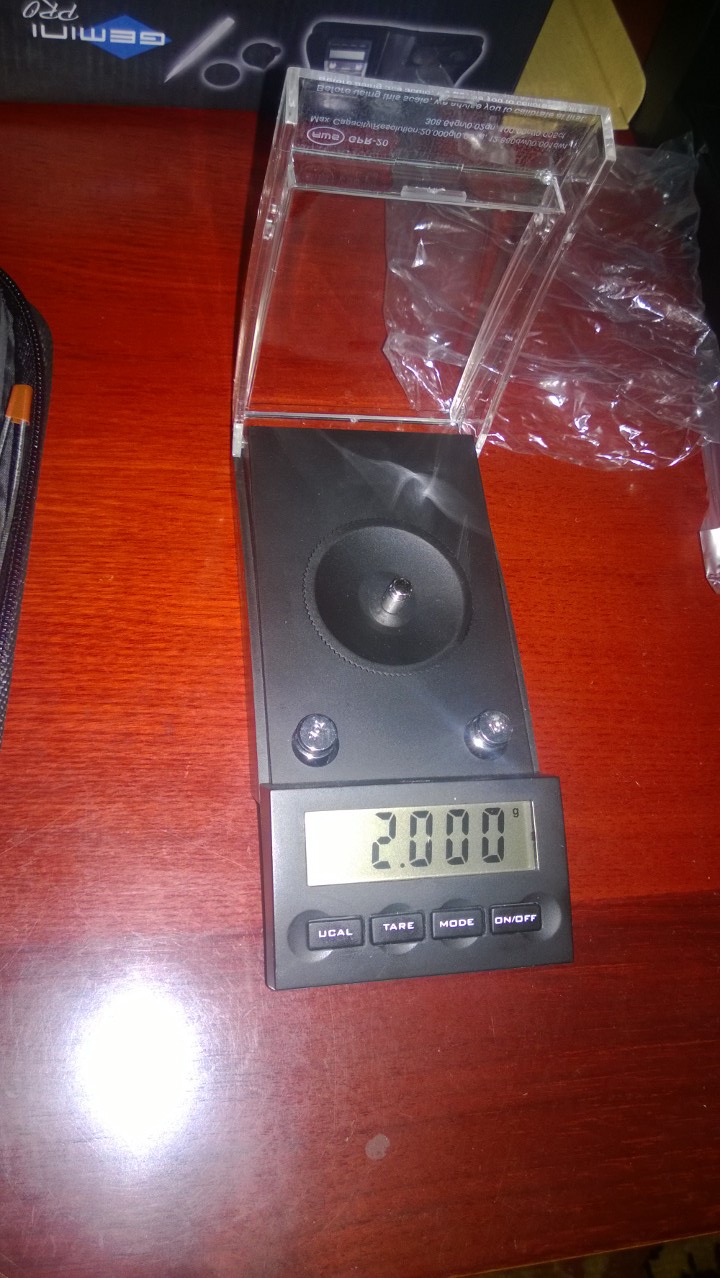
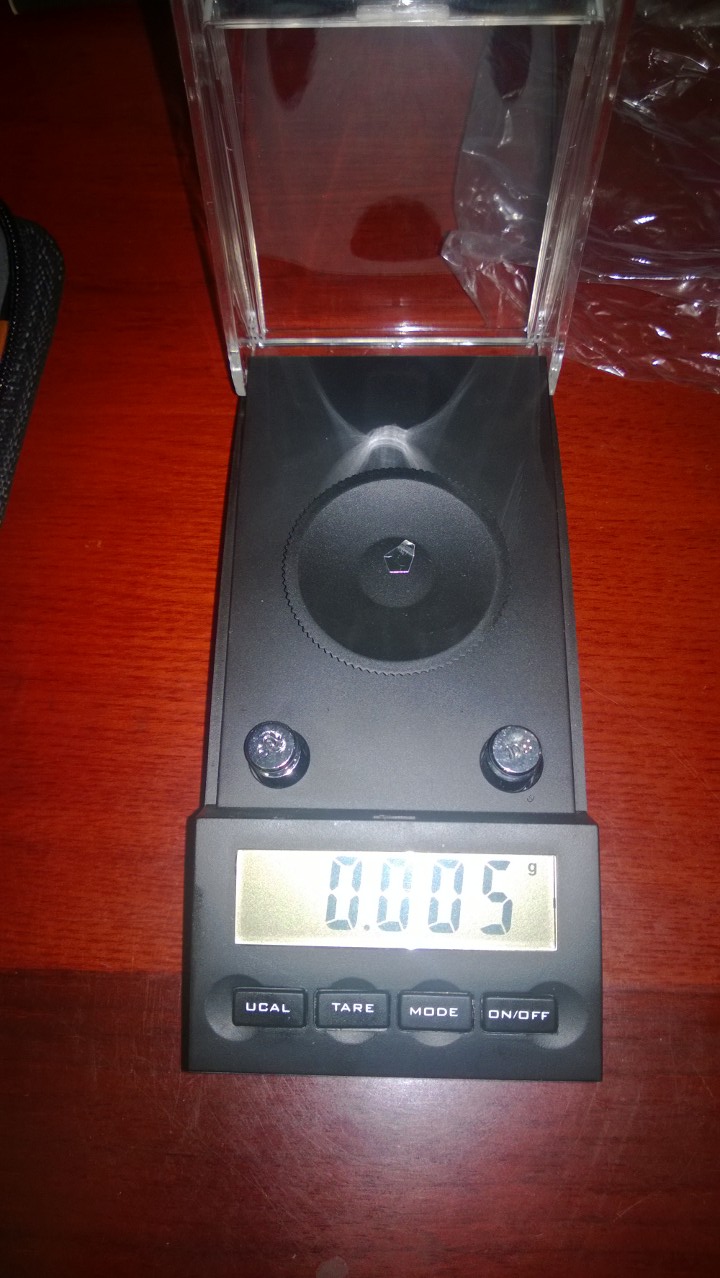
I did not take all the photos, but the scale went through all of the calibration set down to 5 mg and on all of them the maximum difference in weight was 1 mg, tops.
Yes, this is 0.015 grain as a maximum error.
Not bad, huh? A $50 scale weighing from 20 grams to 5 milligram (!) objects, and to 1 milligram precision! Accuracy for static weighing - check!
After receiving the more precise Radwag semi-microbalance scale, I found what was the problem initially. One of the calibration
weights included with the scale turned to actually weigh 10.00101 gram, and the second was 9.99987. You can fix this problem by buying the replacement calibration weights that are
certified to comply with ASTM Class 1 specification. They are typically available on eBay for $50/10 g weight.
Of course reloaders do not always use the scale to weigh static objects. Often the powder is trickled onto the pan to top off the initial
drop that is deliberately set slightly underweight, to compensate for inaccuracy of the powder measure. Many electronic scales are not designed to be used in this mode, and
accumulate significant errors when the weight on the pan changes dynamically.
To check if GPR-20 has this problem, I have set up Redding 10X Pistol Powder measure to drop about 70mg (1.08gr) of Titegroup, which consists of really small flakes and
meters very well. I have cross-checked the weight using Radwag AS/60/220/C2 semi-microbalance scale. After that, I would return
the powder pan back to GPR-20 and slowly trickle the powder in until it would reach approximately 100mg (1.54gr). I would then weigh the sample again on Radwag.

I discovered two things.
First, the scale worked quite well in this scenario, generally keeping within 1-2 milligrams (0.015-0.031gr), and accumulating the errors very slowly (in fact,
I did not even notice the error accumulation until I processed the data; I would have run more experiments have I noticed it earlier). It did lag by 2-3 seconds, so
I had to trickle very slowly towards the end, and even then I would usually miss 100 mg which was my target - but only by a milligram. Assuming that the goal for the
reloading is to keep charges pretty close to 0.1 grain accuracy, the scale performed admirably on the trickling accuracy test.
Unfortunately, I also discovered that the scale shuts down within about a minute, if there is no significant weight changes in the pan - trickling does not seem
to affect the shutdown timer. This is not unreasonable for a battery-powered scale, but if the time interval before weighings is more than 1 minute, you will have to power
it back up. Chances are, however, that you will have already dropped the next charge from your dispenser, only to discover that the measure is now off, and needs to be powered
up - and have to discard the powder drop, because, obviously, it has to be powered up with an empty pan to tare correctly. Also, I do not know how long the scale will
last on the set of batteries.
As a result, I don't think GPR-20 is a good replacement for a beam scale for general purpose reloading. It is amazingly accurate, especially for the price,
but the battery power imposes limitations that are not acceptable for using it as a primary reloading scale.
There is an exception, however. It is if you only load for pistol using a high quality progressive press or a high quality powder measure in combination with a well-metering
powder such as Bullseye or Titegroup. In this case you can usually rely on the powder measure, and only need the scale to calibrate it and spot-check the drops. GPR-20 is an
excellent solution for this scenario.
For more information, see the manual.
You can buy it on Amazon .
.